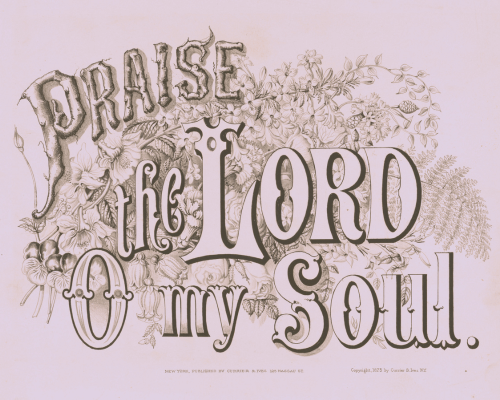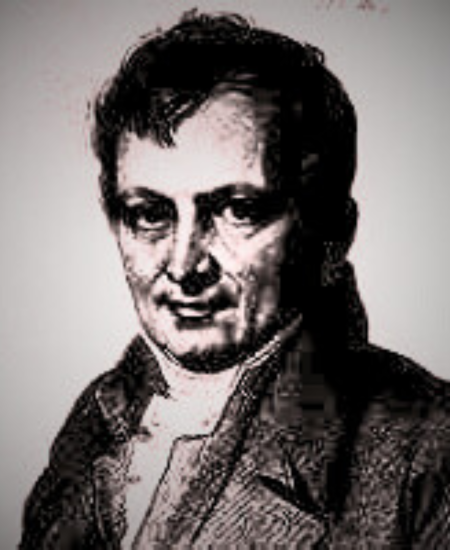
In a world filled with constant noise, distractions, and challenges, the practice of prayer holds a timeless significance. It transcends cultures, religions, and beliefs, serving as a universal thread that weaves through the fabric of humanity. Whether done in solitude or as part of a communal gathering, prayer has the remarkable ability to connect us to something greater than ourselves.
In today's fast-paced and often tumultuous world, the importance of prayer takes on even greater significance. Amidst the chaos, prayer becomes a refuge for the weary soul, a sanctuary from the noise and demands that surround us. It is a sacred space where we can find solace, seek guidance, and utter our deepest longings.
Throughout this article, we will explore the profound role that prayer plays in our lives from a Christian perspective. We will examine the practice of "inward" prayer as written about by such notables as Mother Teresa, Jeanne Guyon and Gerhard Tersteegen, delving into its relevance in the modern world and unveil the ways in which it can bring us closer to inner peace, clarity, and purpose.
Join us on this journey of discovery as we navigate the power of inward prayer and its extraordinary ability to ignite our souls. Let us embark together into the realm of inward prayer, where the answers we seek and the solace we long for reside, awaiting our invitation to embrace the divine presence within. This might just be the starting point of my journey, and perhaps yours too, as we embark on a quest to discover the divine essence within us—the Holy Spirit.

Types of Prayer
While there are hundreds of prayers in the Bible, here is a list of some of the types of prayers we can find:
- Petitionary Prayer: Asking God for specific needs or desires.
- Intercessory Prayer: Praying on behalf of others' needs or concerns.
- Thanksgiving Prayer: Expressing gratitude to God for His blessings and provisions.
- Praise and Adoration Prayer: Offering praise and worship to God for His greatness and character.
- Confessional Prayer: Acknowledging and seeking forgiveness for sins and shortcomings.
- Lament or Supplication: Crying out to God in times of distress or sorrow.
- Contemplative or Meditative Prayer: Quiet reflection and communion with God, often involving Scripture or spiritual insights. This is also "inward" or spiritual prayer and the one we will be exploring in this article.
- Prayer of Faith: Praying with confidence, trusting that God will answer according to His will.
- Prayer of Surrender: Yielding to God's plan and seeking His guidance and direction.
- Prayer of Dedication: Offering oneself and one's life to God's service.
These are just a few examples to give you an idea of how different our prayers can be depending upon the circumstances, and there may be other types of prayer mentioned or implied in the Bible as well.
For our study on inward prayer today, we'll explore the teachings of Jeanne Guyon and Gerhard Tersteegen that emphasize specific aspects of inward prayer and spiritual communion with God. We'll also touch on Mother Teresa's ideas of inward prayer as well.

What is Inward Prayer?
Inward prayer, as taught by spiritual figures like Jeanne Guyon, Mother Teresa, and Gerhard Tersteegen and many others emphasizes the profound and intimate communion of the soul with God.
Unlike outward or vocal prayers, which involve verbal expressions, inward prayer delves into the depths of one's heart and spirit, seeking a direct connection with the divine. This form of prayer encourages believers to turn their attention inward, allowing the Holy Spirit to guide their thoughts and emotions, fostering a profound awareness of God's presence within their innermost being.
In fact, Jesus Christ encourages us to do just this in Matthew 6:6-7. We are to go into our inner room or closet and shut the door! Here is the ASV version: "But thou, when thou prayest, enter into thine inner chamber, and having shut thy door, pray to thy Father Who is in secret, and thy Father Who seeth in secret shall recompense thee." This "inner chamber" is not a physical place, but rather an interior place in our hearts, the deepest part of who we are - our very soul. This is where we meet with the Holy Spirit, Who sees our hearts. This is a deep spiritual truth - God sees our hearts because, as Christians, He dwells within us.
Inward prayer encourages individuals to quiet their minds, letting go of distractions, and to listen attentively to the still, small voice of God speaking within. It is a practice of profound surrender, where the soul opens itself up fully to God, seeking transformation, guidance, and a deeper understanding of His will. So His will will be done on earth as it is in heaven.
Through this inward journey, believers seek to experience God's love, grace, and transformative power in a more intimate and personal way, leading to spiritual growth and a closer relationship with the divine. But, understand, this is NOT about self-interest, but that of self-denial and seeking the inward man. This inward journey is not easily traveled.

Jeanne Guyon on Inward Prayer
Jeanne Guyon (1648-1717) was a French writer known for her influential works on spirituality, particularly on the practice of inward prayer and contemplation. One of her most renowned works is "A Short and Easy Method of Prayer," which has left a significant impact on Christian mysticism and Christian prayer for hundreds of years.
At the core of Jeanne Guyon's teachings is the concept of "pure love" or "perfect love," which she believed to be the highest form of prayer and the key to spiritual growth. In her view, this love is not simply an emotional state but a deep inner surrender and abandonment of the self to God. Guyon taught that through inward prayer, individuals could experience a profound union with God, allowing His love to flow through them and transform their lives.
Her approach to inward prayer emphasized simplicity and accessibility to all believers, regardless of their education or social status. She encouraged seekers to let go of complex methods and focus on cultivating an attitude of inward silence, where the soul can rest in God's presence. This silence is not a mere absence of noise but a quieting of the mind, desires, and distractions, creating space for a direct encounter with the Divine.
Guyon also emphasized the importance of continuous prayer, advocating for an ongoing conversation with God throughout the day, even amidst daily tasks and responsibilities. This constant awareness of God's presence fosters a deeper relationship and intimacy with Him. This reminds me so much of Brother Lawrence and his simple and beautiful "practice the presence of God" way.
While Guyon's teachings on inward prayer were embraced by many, they also faced criticism and controversy within the religious authorities of her time. (There was much corruption within the court of King Louis XIV and he was responsible, through his corruption, for her imprisonment.) Some accused her of promoting quietism, a belief that one should passively wait for God's grace without actively participating in religious duties. As a result, she faced persecution and was even imprisoned for her beliefs.
Despite the challenges, Jeanne Guyon's writings on inward prayer continued to inspire countless individuals seeking a deeper, more personal connection with God. Her emphasis on divine love, inner surrender, and continuous communion with God left a lasting legacy in the realm of Christian spirituality and continues to resonate with seekers of spiritual depth and authenticity today.

Gerhard Tersteegen on Inward Prayer
Gerhard Tersteegen (1697-1769) was a German Reformed Pietist and a significant figure in the spiritual revival known as the "Quietist Controversy." Like Jeanne Guyon, Tersteegen's writings also emphasized the practice of inward prayer and contemplation as a means to deepen one's relationship with God and experience spiritual transformation.
One of Tersteegen's most famous works is a collection of hymns and poems titled "The Spiritual Flower Garden" (Geistliches Blumengärtlein). In his writings, he stressed the importance of the inner life and the necessity of seeking God within the depths of one's soul. Tersteegen believed that the Holy Spirit was the true teacher of the soul, leading individuals into a more profound understanding of God and His ways.
Central to Tersteegen's teachings on inward prayer was the idea of the "Inner Word" or "Inner Light." He encouraged believers to turn inward and listen attentively to the still, small voice of God speaking directly to their hearts. This idea is reminiscent of the Quaker concept of the "Inner Light," which holds that every individual has a direct and personal connection with God.
Tersteegen's approach to inward prayer was rooted in simplicity and childlike faith. He emphasized the need to surrender one's will and desires to God, trusting in His divine providence and guidance. Through this surrender, believers could find peace, joy, and rest in God's presence, no matter the circumstances they faced.
Unlike Jeanne Guyon, Tersteegen's teachings on inward prayer did not face the same level of controversy or persecution. His writings were widely embraced by the Pietist movement, which sought to emphasize a personal and experiential faith that went beyond mere intellectual knowledge.
Tersteegen's influence extended beyond his writings, as he became known for his exemplary personal piety and deep spirituality. He was regarded as a humble and gentle soul, drawing many people to seek his counsel and spiritual guidance.
Overall, Gerhard Tersteegen's writings on inward prayer emphasized the direct and personal experience of God's presence within the heart. His emphasis on simplicity, surrender, and the Inner Word continues to resonate with those who seek a more intimate and transformative connection with the Divine.

Thoughts of Mother Teresa: Prayer of Quiet
Mother Teresa, a beloved figure in Christian spirituality, had profound thoughts on prayer, including its inward dimension. She emphasized the significance of silence and stillness as a means to connect with God and listen to His voice within the depths of our hearts. Mother Teresa believed that prayer is not merely reciting words but rather putting oneself in the hands of God and being receptive to His guidance and presence. She recognized the transformative power of small acts of love done with great devotion, bringing joy and peace.
In her book, "The Way To Perfection," Mother Teresa calls the prayer of quiet (or inward prayer) a type of mystical, infused contemplation. "I still want to describe this prayer of quiet to you in the way that I have heard it explained and as the Lord has been pleased to teach it to me. . .This is a supernatural state and however hard we try, we cannot acquire it by ourselves. . .the faculties are stilled and have no wish to move, for any movement they make seems to hinder the soul from loving God."
In the book "Where There Is Love, There Is God," Mother Teresa stressed the importance of prayer, comparing it to the life-giving nature of blood in the body. She considered prayer as essential nourishment for the soul, emphasizing the need for silence and surrender in order to enter into a deeper communion with Christ.
The concept of the "Prayer of Quiet" is closely related to inward prayer. It refers to a state of deep interior stillness and tranquility that arises through contemplative prayer. In this prayer, the focus is on surrendering oneself to God's presence and allowing Him to work within us. The Prayer of Quiet involves letting go of distractions, thoughts, and external concerns, and opening oneself to experience a profound sense of union with the divine. In our hectic world of iPhones, computers, busyness, this is so very hard to do. However, if we are to truly experience this inward search within our souls, we must seek the quiet. "Be still, and know that I am God." Psalm 46:10
While Mother Teresa did not explicitly use the term "Prayer of Quiet," her emphasis on silence, surrender, and deep communion with God aligns with the essence of this practice. It is through such inward prayer that one can enter into a state of quietude and experience a deeper connection with the Holy Spirit who resides within.
Incorporating inward prayer, as understood by Mother Teresa and the principles of the Prayer of Quiet, can profoundly enhance our spiritual journey by fostering a deeper connection with God, cultivating faith, nurturing love, inspiring acts of service, and ultimately leading to inner peace and fulfillment.
It is worth noting that while Mother Teresa's devotion to prayer and her understanding of inward prayer were profound, she also experienced what is known as the "dark night of the soul." In her letters, she expressed moments of doubt and a feeling of spiritual emptiness. This inner struggle highlights the complexities of the spiritual journey and the challenges that can arise even for those deeply committed to prayer and faith. (Note: We will explore "the dark night of the soul " and its implications to a Christian believer in another article in the future.)

Inward Prayer: Understanding the Practice
Techniques and methods for engaging in inward prayer
In today's fast-paced and hectic world, the practice of inward prayer can serve as a powerful tool for finding peace, solace, and spiritual connection. By turning our focus inward and cultivating a deeper connection with the Divine, we can navigate the challenges of modern life with clarity, resilience, and a sense of purpose. Here are several techniques and methods for engaging in inward prayer:
- Silence and Stillness: Creating a space of silence and stillness is essential for inward prayer. Find a quiet corner or dedicate a specific time each day to disconnect from external distractions and enter into a state of inner stillness. Allow your thoughts to settle, and create a space within to listen to the promptings of the Holy Spirit or your inner divine intuition.
- Meditation and Contemplation: Incorporating meditation and contemplative practices can deepen our inward prayer experience. Through focused breathing, mindfulness, and reflection, we can quiet the mind, open ourselves to Divine guidance, and gain insights into our spiritual journey.
- Journaling and Reflection: Writing down our thoughts, prayers, and reflections can be a powerful way to engage in inward prayer. Keeping a journal allows us to process our emotions, express gratitude, seek guidance, and document our spiritual growth. It serves as a tangible record of our dialogue with the Holy Spirit.
- Scripture and Sacred Texts: Engaging with scripture and sacred texts can enrich our inward prayer practice. Reading passages that resonate with our spiritual quest, reflecting on their meaning, and incorporating them into our prayers can deepen our connection with God and provide guidance on our path.
- Prayer Walks: Take a quiet walk in nature or a peaceful place and use this time to engage in silent prayer. Observe the beauty of creation, and let the serenity of the surroundings inspire your conversation with God.
- Breath Prayers: Use short, simple phrases as breath prayers, repeating them rhythmically with each breath. For example, inhale and think, "Lord, have mercy," and exhale, "Christ, have mercy." This can help anchor your mind and foster a deeper sense of connection with the Divine.
- Centering Prayer: Choose a sacred word or phrase (e.g., "God is love" or "Be still") and silently repeat it in your mind. Whenever your thoughts wander, gently bring your focus back to the chosen word or phrase, allowing it to become a mantra that leads you into a deeper state of prayerful awareness.
- Prayer of Examen: At the end of each day, review your experiences, emotions, and interactions, seeking God's presence and guidance. Express gratitude for blessings and seek forgiveness where needed, allowing God to reveal areas of growth and transformation.
It is important to approach inward prayer with an open heart and a willingness to surrender control. Each individual's experience with inward prayer may vary, and it is essential to find techniques and methods that resonate with one's unique spiritual journey.
Remember that the practice of inward prayer is not about achieving a specific outcome but about cultivating a consistent and sincere desire to draw closer to God. We must be patient with ourselves and allow the process to unfold naturally. As we engage in these practices, we may find that our relationship with the Divine deepens, and the peace and wisdom we gain from inward prayer will begin to positively influence our interactions and decisions in the world around us.
Sources:
- Foster, Richard J. "Prayer: Finding the Heart's True Home." HarperOne, 2018.
- Pennington, M. Basil. "Centering Prayer: Renewing an Ancient Christian Prayer Form." Image, 2009.
- Keating, Thomas. "Open Mind, Open Heart: The Contemplative Dimension of the Gospel." Bloomsbury Continuum, 2020.
- Guyon, Jeanne. "A Short and Very Easy Method of Prayer." Crossreach Publications, 2018
- Tersteegen, Gerhard. "Spiritual Crumbs from the Master's Table." Forgotten Books, 2018
Please note that while these sources can provide valuable insights and guidance on inward prayer, personal experimentation and individual exploration are encouraged to tailor the practice to one's own spiritual needs and beliefs.

As we conclude this exploration of inward prayer, I invite you to reflect on the profound impact it can have on your personal spiritual growth and connection with the Holy Spirit who dwells within you. We so often overlook the Holy Spirit who is our Comforter and Guide, and I hope this article has brought Him to the forefront of your mind.
Inward prayer offers a precious opportunity to quiet the noise of the world, listen to the whispers of the Divine, and cultivate a deep sense of intimacy with God.
Embracing this practice with openness and sincerity can lead to transformative experiences, heightened awareness, and a profound sense of divine presence in your life.
May you embrace inward prayer as a sacred invitation to deepen your spiritual journey and forge a deeper connection with the Holy Spirit who lovingly resides within your heart.
Thank you for visiting our Christian blog, and we look forward to sharing our passion for Christian theology and literature with you in future articles!









Member discussion